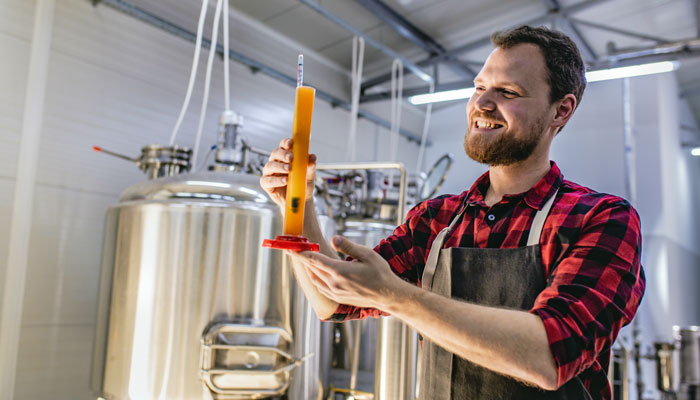What do low alcohol and alcohol-free actually mean?
- Alcohol-free means there is no more than 0.05% alcohol by volume (ABV). “Alcohol-free” can be used on alcohol substitutes like beer, wine or gin, where the alcohol has been removed. Soft drinks, which do not have alcohol to begin with, are not required to have any alcohol-free labelling.
- Low alcohol drinks must be no more than 1.2% ABV.
- De-alcoholised refers to drinks where the alcohol has been removed, making it no more than 0.5% ABV.
- Non-alcoholic refers to drinks that do not contain alcohol, such as soft drinks like cola and orange juice, as well as mocktails (non-alcoholic cocktails).
Is it a good idea to drink less alcohol?
One of our Cancer Prevention Recommendations is to limit alcohol. But to reduce your cancer risk as much as possible, it’s better to not drink, as any amount of alcohol can increase your risk of cancer. However, we recognise it’s not easy for everyone, especially around occasions such as Christmas and new year celebrations.
As well as increasing cancer risk, it’s important to remember that alcoholic drinks are high in calories. Not only this, when we drink alcohol it can make us more likely to choose unhealthy food. Frequently eating calorie-rich food can contribute to weight gain over time. Alcohol also contains little of the nutrients your body needs to be healthy.
> Download our alcohol factsheet to see how you can cut down
Are alcohol-free drinks better than normal soft drinks?
People can feel under a lot of pressure to drink in social situations, like Christmas.
So, generally, they are a good way to help people reduce how much alcohol they drink and are helpful in social situations where there can often be pressure to drink, especially if everyone else is drinking.
Low and no-alcohol drinks can also be useful for people if they simply like the taste of lager or gin, but want to avoid the alcohol.
Are alcohol-free drinks full of sugar?
Just like alcoholic drinks, the sugar and calories in low or no-alcohol drinks varies a lot too. That’s why it’s best for your health if you opt for smaller sizes – 125ml of low-alcohol wine rather than a large glass, and a bottle of low-alcohol/alcohol-free beer rather than a pint. If you’re having alcohol-free spirits, you could use mixers such as sugar-free soft drinks, soda or tonic water.
While it’s a good idea to check the label for the amount of sugar and calories a drink contains, it’s not mandatory for the manufacturer to list this on the pack. You could check the ingredient list to see if sugar is added. But it is worth remembering that fruit juice, purees or concentrates will also contribute to the sugar content.
How is alcohol removed from drinks?
There are a few different methods for removing alcohol from drinks, depending on the drink and the preference of the brewer, distiller or wine maker.
- Boiling: This can impair the taste of the drink so is usually done very slowly to avoid the drink being “cooked” (think mulled wine, which is often lower in alcohol than normal red wine).
- Reverse osmosis: This is where alcohol and water are passed through a thin layer. The residue that is left behind (the bit that makes it taste like wine) then has the water added back to it – but crucially not the alcohol.
- Vacuum or thermal distillation: Like with boiling, this uses heat to remove the alcohol.
- Cold filtration: This process allows the alcohol to be filtered out while keeping its taste and character.
Or it could be a drink that hasn’t been fermented in the first place – but these will taste more like grape juice than wine!
So what’s the verdict on low and no-alcohol drinks?
You shouldn’t feel under pressure to drink alcohol socially – but many people do. So if you like the taste but want to cut down on alcohol, alcohol-free and low alcohol drinks can be a good choice.
Mocktail recipes
If drinking or entertaining at home why not try our top 3 mocktail recipes:
Warm winter punch

Affogato
Spice apple warmer
If you are concerned about your or a friend’s drinking, the charity Drinkaware can help, as well as advice from the NHS.



